 Issue 19 Autumn 2013
Issue 19 Autumn 2013
- The University Library: A Vibrant Place, Key Collections, and Crucial Services
- Reinvigorating the Science and Engineering Library
- Virtual Visits to the Past: Havana, Lick Observatory, and UCSC
- A Love Letter in Thousands of Pieces: the Jerry Garcia Memorial Altar Collection
- A Personal Planned Giving Story
The University Library: A Vibrant Place, Key Collections, and Crucial Services
M. Elizabeth Cowell, Interim University Librarian
As Interim University Librarian I have great hopes and aspirations for the UCSC Library and am proud to represent this great organization as part of the campus leadership. My predecessor and dear colleague Ginny Steel is now University Librarian at UCLA.
The University Library is well known to the campus community as a place, collections, and a set of services that A place to study support UCSC’s academic mission. I continue to advocate for these important roles.
A place to study support UCSC’s academic mission. I continue to advocate for these important roles.
To enhance our role as place, our number one fundraising priority is the renovation of the Science and Engineering Library. The facility is in need of an update and we are excited to apply all we learned from the McHenry Library project to the rejuvenation of this beautiful building. Read the interview with Greg Careaga about the project to learn more. Your support of this project will allow us to realize our vision to create a state-of-the-art space for the UCSC community.
Published research is a key part of our collections. In support of new modes of scholarly communication, the University of California Academic Senate recently voted to approve a systemwide open access policy for Senate faculty. The policy grants a license to the University to make published articles deposited by faculty in an open access repository freely available to the public. Learn more about how the Library supports this important policy.
As researchers in all disciplines from music to engineering produce data in digital form, libraries are becoming more active in areas such as data management and the digital humanities. Library staff members help researchers create the data management plans frequently required by funding agencies and both preserve and provide access to data created through the research process. We are actively looking for ways to collaborate with campus divisions and departments to highlight the library’s role in these emerging areas.
As always, I welcome your feedback. I can be reached via email at mcowell@ucsc.edu and look forward to hearing from you.
Reinvigorating the Science and Engineering Library:
An Interview with with Greg Careaga
Ethan Henderson, Senior Director Library Development
Dedicated in the spring of 1992, the Science and Engineering Library—“S&E” as its avid users fondly call it—is among Looking into S&E Library the most beautiful buildings on campus. Designed by the award-winning San Francisco architecture firm of EHDD, it sits nestled among the redwoods on Science Hill. Its collections and librarians support Physical & Biological Sciences and Engineering, among many other disciplines. Data-heavy as these disciplines are, their needs change at breathtaking speed, and the UCSC Library must constantly stay current with technological developments. The American Institute of Architects awarded S&E the Award of Excellence for distinguished accomplishment in library architecture. Now, we envision a renovation that will re-configure the interior of the building to accommodate more group study rooms, collaborative workspaces, a café, a late-night study area, state-of-the-art information commons, and a laptop bar, among other improvements.
Looking into S&E Library the most beautiful buildings on campus. Designed by the award-winning San Francisco architecture firm of EHDD, it sits nestled among the redwoods on Science Hill. Its collections and librarians support Physical & Biological Sciences and Engineering, among many other disciplines. Data-heavy as these disciplines are, their needs change at breathtaking speed, and the UCSC Library must constantly stay current with technological developments. The American Institute of Architects awarded S&E the Award of Excellence for distinguished accomplishment in library architecture. Now, we envision a renovation that will re-configure the interior of the building to accommodate more group study rooms, collaborative workspaces, a café, a late-night study area, state-of-the-art information commons, and a laptop bar, among other improvements.
I sat down with Greg Careaga, Head of Research, Outreach, and Instruction for the UC Santa Cruz Library, to talk about the upcoming renovation of the Science & Engineering Library.
Why does the S&E Library need renovation? It looks nice from the outside.
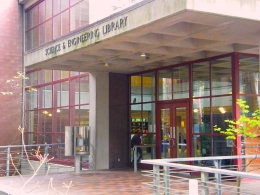 Front entrance to S&E LibraryThe Science & Engineering Library opened in 1991. That was right around the time the World Wide Web was born, but before we understood how the Web would change the way we interact with information and one another. We designed a library for researchers who relied on printed books and serials, at a time when ‘cutting-edge technology’ meant searching indexes and abstracts on CD-ROM and ‘online searching’ meant a command line interface that required professional mediation. We designed a library for a student body of 9,000 that didn’t depend on laptops or cellphones and that didn’t need access to a wireless network.
Front entrance to S&E LibraryThe Science & Engineering Library opened in 1991. That was right around the time the World Wide Web was born, but before we understood how the Web would change the way we interact with information and one another. We designed a library for researchers who relied on printed books and serials, at a time when ‘cutting-edge technology’ meant searching indexes and abstracts on CD-ROM and ‘online searching’ meant a command line interface that required professional mediation. We designed a library for a student body of 9,000 that didn’t depend on laptops or cellphones and that didn’t need access to a wireless network.
We have evolved over the years and continue to work hard to keep up with changing times. Our physical collections grow more slowly now. Our online collections have become vast and far more accessible. So we are a virtual as well as a physical library today, and many researchers use our resources from their homes and offices. But our student body—now over 17,000—depends on the physical library as much as it ever has. Students need access to new tools to help them visualize and synthesize information into knowledge. They need access to a clean, safe, quiet place to study, 24 hours a day and at least five days a week. They need more collaboration spaces, and they need more access to power and data to support their ubiquitous use of mobile technologies. If we are to do a proper job of supporting the next generation of students, it is more than we can do piecemeal.
What departments/divisions does the S&E Library mainly support?
The library supports students from across campus who appreciate its convenient location on Science Hill, its resources, and an environment that is conducive to serious study. The library’s collections directly support the Jack Baskin School of Engineering, the Division of Physical and Biological Sciences, and their 34 undergraduate and graduate degree programs.
What if I were student who wanted a space where I could create presentations with classmates and have cutting-edge technology to help with our research. Will S&E have this?
The S&E library currently has eight group study rooms and we have a goal to create several more. We intend to 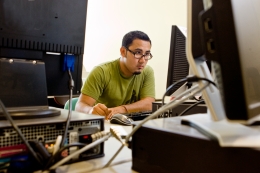 create a variety of spaces to accommodate different group sizes and different collaboration requirements, such as teleconferencing support. We do intend to have a presentation space for students to develop and rehearse their work.
create a variety of spaces to accommodate different group sizes and different collaboration requirements, such as teleconferencing support. We do intend to have a presentation space for students to develop and rehearse their work.
Providing students with cutting-edge technologies is a trickier thing. ‘Cutting-edge’ is elusive; what is revolutionary now may well be overtaken by the next wave of technology in five years time. That is why we are creating the Fund for Innovation in Library Learning Technologies. With the help of our supporters, we will maintain a technology infrastructure that is fresh and relevant to 21st-century scholars long after the big renovation project is complete.
Our current vision for providing cutting-edge technologies and services includes support for natural user interface computing, 3-D printing, and 3-D visualization.
The future of libraries is constantly changing. How do you envision S&E supporting future needs of students and faculty?
There are still some constants. The campus teaches a rigorous curriculum in a ten-week quarter and our students tell us that they need the library as a refuge from the distractions of dorm or apartment life. Whether they are solo reading or working together in small groups, they tell us that being a part of a disciplined study environment is vital to their academic success.
In the past, scholars published the results of their research but their data were their own. Today, many scholars are encouraged or required to share their raw data. The library can help students and faculty to organize, describe, preserve, and expose their data for discovery and reuse by the broader research community.
We want a cafe up on this side of campus. Will S&E have one? And what other cool concepts are being planned?
The Global Village Café at McHenry Library has been a great success, and one we hope to replicate at the Science & Engineering Library. We have a space in mind, and a lot of hard work ahead of us, before we realize our goal to bring a café to Science Hill.
We are very proud of our work in support of the very successful Computer Game Design program. Our console gaming laboratory is very cramped. We hope to expand it to better support student research and study with respect to the history, evolution, and design theory of console games.
To learn more about how you can be part of this exciting project, please contact me at ethanh@ucsc.edu.
Virtual Visits to the Past: Havana, Lick Observatory, and UCSC
Susan Chesley Perry, Head of Digital Initiatives, and Elisabeth Remak-Honnef, Head of Special Collections and Archives
Some stunning images, including scenes of 1930s Havana, were recently made available as digital images on the Library’s Digital Collections site.
Staff from both Special Collections and Archives and the Digital Initiatives Department have been collaborating to make these and campus-related pictures available to anyone with an Internet connection.
Here’s a taste of what we’ve been working on:
Branson De Cou Digital Archive
These images document urban and rural landscapes that no longer exist due to the ravages of war, revolution, and time. This archive is the most frequently consulted of all digital archives owned by UC Libraries.
Images of Cuba were recently added to this amazing collection of hand colored lantern slides produced by Branson DeCou between 1920 and 1941. Other countries represented include Russia, Ireland, Germany, and Italy. Images of Latin America and France are next in line for digitization.
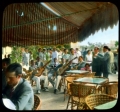 Havana sidewalk cafe
Havana sidewalk cafe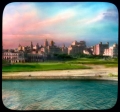 Havana skyline
Havana skyline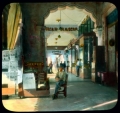 Havana shoeshine stand
Havana shoeshine stand
Portraits from the Lick Observatory Digital Archive
Often requested at our service desk, these portraits from the Lick Observatory Digital Archive document resident and visiting astronomers at Lick Observatory from the late 19th and early 20th centuries. We have been pleased and amazed at the heavy use that these 450 digitized portraits have received in the short time since they were made digitally available.
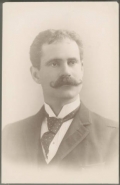 Charles E. St John
Charles E. St John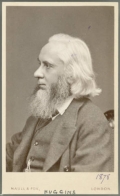 William Huggins
William Huggins
In preparation for UCSC’s upcoming 50th anniversary in 2015, our two departments have been very busy processing and digitizing a selection of materials that document the campus’ history, including student publications and photography from the late 1950s to the present. So far, we have added almost 1,400 photographs to the Digital Collections. Please help us to identify faces and places! Add tags or comments at the bottom of a photo page if you recognize a person or location we haven't identified.
Hundreds of student publications from all the colleges are currently being prepared for scanning and other campus publications will also be selected.
In addition, many new campus oral histories have been published and are available online. Interviews with James Clifford, Pedro Castillo, Bill Friedland, Helene Moglen, and Carol Freeman are among those recently completed.
There are plenty of other projects in the works—these are just a few to whet your appetite! Please take a look at these sites; we welcome your comments. And of course, you are always welcome to visit Special Collections and Archives to look at the original materials.
 Students building a log cabin, 1965
Students building a log cabin, 1965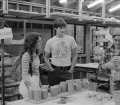 Preview Day: ceramics studio
Preview Day: ceramics studio
A Love Letter in Thousands of Pieces: the Jerry Garcia Memorial Altar Collection
Nicholas Meriwether, Grateful Dead Archivist
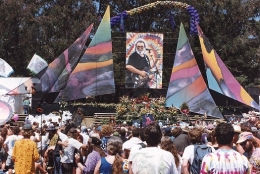 Jerry Garcia Memorial Altar
Jerry Garcia Memorial Altar
One of the most colorful and compelling collections in the Grateful Dead Archive is the Jerry Garcia Memorial Altar Collection, a trove of more than 3,000 items donated to UC Santa Cruz by Garcia’s daughter, Theresa “Trixie” Garcia. The collection consists of poems, letters, art, and artifacts that fans brought to the celebration of Garcia’s life held on August 13, 1995, in San Francisco’s Golden Gate Park, where the band had often played free concerts during their tenure in the Haight-Ashbury.
The celebration lasted all afternoon, and the centerpiece of the event was the creation of a magnificent shrine to the beloved musician. Assembled on a section of the bleachers next to the Polo Fields, the altar, as it was dubbed, featured a giant portrait of Garcia in the center, with row after row of fan tributes around and below. Dozens of volunteers and Bill Graham Presents staffers helped ferry treasures, creating a spectacular memorial to the fallen musician.
It was a remarkable sight, a spontaneous, communal gesture that was a physical manifestation of fans’ affection for Garcia, a tribute to what his example represented to so many people over so many years. As noted Grateful Dead radio host and writer David Gans commented afterwards, “Most of the people who loved Jerry Garcia never met him, but they felt intimate with him just the same.” The offerings placed on the bleachers that day expressed that intimacy. Scott Carlson, a volunteer in Special Collections, calls it “one huge love letter in thousands of pieces.”
One staffer who helped that day wrote afterwards that he had carried “flowers, beads, crystals, rings, shoes, socks, hats, t-shirts, photos, cookies, candles, incense, balloons, earrings, poems, prose, sobriety tokens, pinwheels, prayer flags, drawings, rocks, guitar picks, guitars, zucchinis, troll dolls, a tiny Barbie, bread in the shape of a lightning bolt, rose petals, Buddhas, Gumbys, saints, madonnas,” and more.
After the memorial, the artifacts were carefully packed away and eventually given to Theresa Garcia, who donated the collection to UC Santa Cruz. Work has begun to catalog and preserve this powerful legacy of the Grateful Dead phenomenon, with plans underway to sponsor a campaign to raise needed funds to fully process and house this mammoth archive.
When that work is complete, the finished collection will represent one of the most evocative expressions of the band–fan bond that defined the core of the Grateful Dead experience—and a document of the spirit that continues to animate the Archive today.
A Personal Planned Giving Story
A Library Supporter
As a young Navy wife, I was quickly brought face-to-face with the reality that my husband, a carrier pilot, could die Carrier Landing doing his work. You bet we had wills! The Navy saw to it that we did. Those wills have been revised many times, most recently to include the littlest member of the family, granddaughter Ella.
Carrier Landing doing his work. You bet we had wills! The Navy saw to it that we did. Those wills have been revised many times, most recently to include the littlest member of the family, granddaughter Ella.
My entire life’s work has been about connecting people with the information they need to flourish in their lives. First as a librarian, then as manager of software development, and now as a UCSC staff member privileged to use the University Library, I’ve always believed that access to an excellent library is a basic requirement of a good life. Thus, for me, it was natural that I’d leave a gift to my public library. And, again, it felt the natural thing to do to remember the University Library in my estate plans.
No one wants to think about dying. So, we postpone making a will . . . we just don’t want to even consider it. Oh, it is so much trouble to gather up the documents. How do I find a trustworthy lawyer to guide me through the process? What is this going to cost? Our internal dialogue goes on and on.
Give your family the gift of having clearly stated your wishes. What is your life about? Do you have a passion for women’s education? For animal welfare? For libraries? If you’ve got a passion, something that tugs at your heart, let your dollars act on your behalf after your time to dance on the planet has ended. You can do this and provide for those whom you love. Your family will appreciate your foresight. Besides, it just feels good.
UCSC’s Office of Planned Giving offers help and guidance in will-making. When you ask, you’ll receive two booklets: one provides a form to get you started on making a will; the other provides valuable advice on ways to make a gift AND gain tax advantages or income for life. Just imagine the good your gift can do. And, yes, please remember the University Library in your estate plans. A gift to the Library is a gift to every member of the University community.
Special Collections Fall 2013 Exhibit:Art of the Book in Santa Cruz
Special Collections has long supported the thriving Santa Cruz book arts and printing community and has
All visitors are welcome to visit the exhibit in the reading room, open Monday through Friday from 10:00 am to noon and 1:00 to 4:00 pm. The exhibit will be on display from early October 2013 through early January 2014.

Editor: Lettie Bennett
Contributors: M. Elizabeth Cowell, Nick Meriwether, Susan Chesley Perry, Elisabeth Remak-Honnef, Ethan Henderson and Greg Careaga
Production: Linda Hunt
Copyediting and proofreading: Mark Engel
Photography:
The University Library: A Vibrant Place, Key Collections, and Crucial Services- Carolyn Lagattuta
Reinvigorating the Science and Engineering Library- Photos courtesy of Jim Mackenzie and Phil Carter
Virtual Visits to the Past - Branson DeCou, Portraits from the Lick Observatory Digital Archive and UCSC Campus History; photos courtesy of Special Collections and Archives, UCSC Library.
A Love Letter in Thousands of Pieces: the Jerry Garcia Memorial Altar Collection- photos courtesy of GDAO.org
A Personal Planned Giving Story – Thomas K. Burke
Special Collections Fall 2013 exhibit: Art of the Book in Santa Cruz - Elisabeth Remak-Honnef


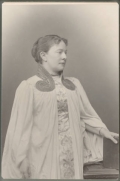
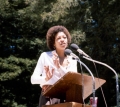
 Santa Cruz, CA
Santa Cruz, CA



